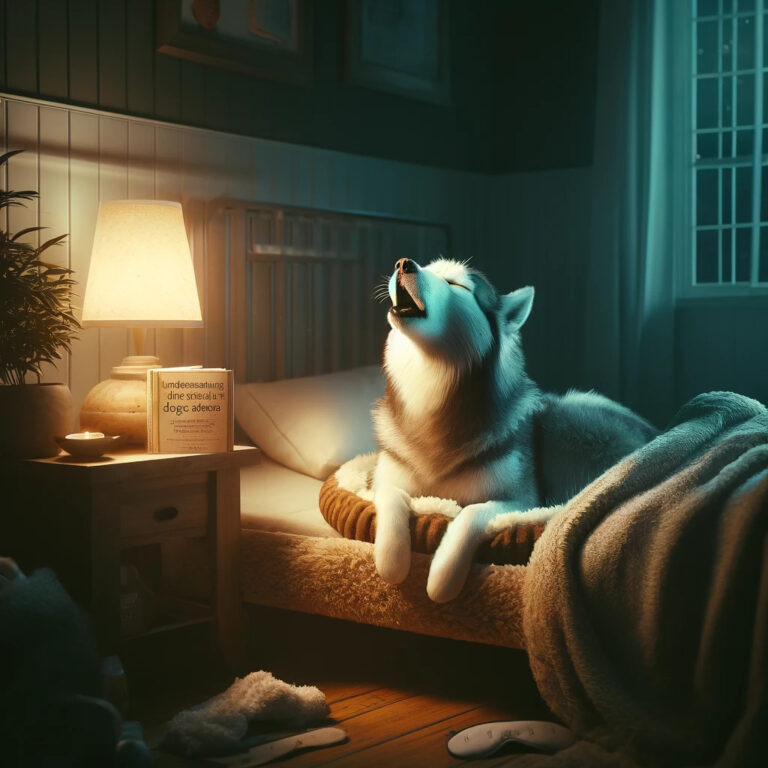Seeking answers to ‘Why does my dog keep tripping?’ Uncover the causes and ensure your pet’s well-being with expert vet care.
Seeking answers to ‘Why does my dog keep tripping?’ Uncover the causes and ensure your pet’s well-being with expert vet care.
As a loving pet owner, it’s common to notice unusual behaviors in your furry companion. One such behavior that might raise concern is when your dog starts tripping or stumbling frequently. If you have found your dog tripping more than usual, you aren’t alone if you are wondering, “Why does my dog keep tripping?”
Dogs may trip for several reasons, ranging from natural aging processes to underlying health concerns. As dogs age, they often face reduced mobility and coordination, making them more prone to stumbling. Medical conditions, notably neurological disorders or arthritis, can also lead to tripping. External factors, like foreign objects lodged in their paw pads or general muscle weakness, further contribute to this behavior. It’s essential to monitor and address any persistent tripping to ensure your dog’s well-being.
In this article, we will explore the potential reasons behind this puzzling behavior and provide insights into what you can do to ensure your canine friend’s health and well-being.
8 Reasons Why Your Dog Is Stumbling Frequently
Over the years, we’ve often faced patients concerned about their dogs’ recurrent tripping. After careful examination and extensive research, we have concluded 8 prime reasons why the dog keeps tripping.
1. Aging
Do dogs get clumsy with age? Aging in dogs is as normal as in humans. Just as we face mobility challenges and health concerns with age, our dogs too can experience movement difficulties as they grow older.
Associated Factors
Several factors can lead to your pet’s consistent stumbling or tripping incidents. The contributing factors are:
- Change in weight
- Loss of vision or poor vision
- Pain in joints (arthritis)
- Nutritional deficiency
How to Prevent or Treat it?
Since aging is not a disease, it can neither be treated nor prevented. No one can. However, you may control or help minimize the impact of the factors associated with it.
- Maintain a healthy weight for your dog to reduce stress on their joints.
- Provide a balanced, age-appropriate diet to ensure your dog receives all essential nutrients.
- Keep your dog physically active with regular, low-impact exercises.
- Most importantly, schedule routine check-ups with a veterinarian. Pet First Veterinary Clinic is always here to monitor your dog’s overall health and address any emerging concerns.
2. Ataxia
Slippery floors aren’t the only culprit to make your dogs fall on the ground. If you notice them stumbling more often, there might be an underlying medical condition called Ataxia (loss of muscle coordination).
The damage to the central nervous system results in a lack of coordination between the brain and the body. It can be categorized into the following types based on which part of the nervous system is affected:
- Vestibular ataxia
- Proprioceptive ataxia
- Cerebellar ataxia
Associated Factors
- Spinal cord or Disc Disease
- Neurological disease
- Degenerative Myelopathy
- Inner ear infection
- Head trauma
- Toxin
- Encephalitis
How to Prevent or Treat it?
- Ataxia results in a dog’s gait resembling that of a drunk person. Therefore, it’s recommended to avoid triggers like alcohol and caffeine as they may exacerbate this condition.
- Always store chemical bottles and medications in secure locations to prevent potential toxicity from accidental exposure or ingestion by pets.
- Besides personal care, it is crucial to seek immediate veterinary attention, as ataxia necessitates proper medical treatment.
- Physical examination, blood and urine tests, X-ray, MRI, and CT-scan help diagnose the root cause.
3. Loss of Balance
If you’ve noticed your dog wobbling or seeming unsteady, it’s essential to observe for signs such as a tilted head, ear scratching, eye flicking, and movement in circles.
Associated Factors
- Vestibular disease (inner ear infection)
- Spinal fractures
- Trauma
- Tumor
- Certain medications
How to Prevent or Treat it?
- By thoroughly cleaning your dog’s ear, you may prevent any infection from prevailing. However, if it occurs, topical solutions or antibiotics may help.
- In case of a spinal fracture or tumor, they’ll need physical therapy and surgery as recommended by the professional vet.
4. Trauma
Head trauma can do more damage than only hindering your dog’s mobility if not diagnosed and treated in time. Knowing that dogs are good at hiding pain, people often question, how do I know if my dog is in pain? Biting or licking their wounds, showing slowed reflexes, anxiousness, heavy panting, or bleeding are the common signs that warrant immediate attention.
Associated Factors
- Brain parasites
- Tumor
- Seizures or shock
- High blood pressure
How to Prevent or Treat it?
- Always supervise your dog during outdoor activities and playtime to minimize the risk of accidents or head injuries.
- Seeking immediate medical help is crucial in case of trauma or injury.
- Treatment options may include medications to manage pain or control seizures, and sometimes surgical interventions.
5. Anxiety
A study from Finland found that over 70% of dogs exhibit signs of anxiety. If you’ve noticed your dog shaking and tripping, you might be wondering about the cause. Such behaviors can often be linked to specific triggers or past traumatic experiences, such as loud noises, fireworks, heights, or passing vehicles.
Associated Factors
- Shaking
- Trembling
- Tremors
- Digestive problems
How to Prevent or Treat it?
- You must provide a calm and comfortable environment so it won’t trigger their anxiety.
- Behavioral therapy is mostly useful in this condition to help your dog overcome their fear or anxiety.
- Your veterinarian may also recommend some anxiolytic medications.
- Providing extra love and support can be a comforting presence for your dog, helping to alleviate their anxiety.
6. Tumor
According to the AVMA, many older dogs, especially those over 10, get cancer. This can make them more likely to trip or walk unsteadily.
Associated Factors
- Chemical exposure
- Prolonged stress
- Environmental factors
- Hereditary
How to Prevent or Treat it?
- You can reduce the chances of developing a tumor in your pet by limiting its exposure to sunlight, toxins, and other common carcinogens like cigarette smoke.
- Make sure to schedule regular check-ups for early detection and treatment of potential health issues.
- Take good care of their diet and exercise to ensure their overall well-being.
7. External Factors
Sometimes, the environment or external elements can be the cause of a dog’s tripping. Factors like slippery floors, uneven terrains, or even certain footwear can affect a dog’s stability.
Associated Factors
- Wet or slippery surfaces
- Uneven grounds or terrains
- Wearing shoes or boots not suited for dogs
- Obstacles in walking paths
How to Prevent or Treat it?
- Ensure that your home environment is safe and free from potential hazards.
- Non-slip mats, regular floor cleaning, and choosing appropriate footwear for your dog can help.
- It’s essential to be aware of the walking path and surroundings when taking your dog for a walk.
8. Vision Impairment
As dogs age, their vision can deteriorate, making it harder for them to navigate their surroundings. This decline in sight can lead to misjudgments in distance and result in tripping over obstacles.
Associated Factors
- Cataracts
- Glaucoma
- Age-related macular degeneration
- General wear and tear of the eyes
How to Prevent or Treat it?
- Regular eye check-ups with a veterinarian can help detect vision problems early.
- In some cases, surgery or medication might be recommended.
- Keeping the home environment clear of obstacles and using night lights can assist dogs with poor vision.
Take Away
Being concerned if your dog keeps tripping or stumbling more than usual is a natural response for a caring pet owner. However, one must know that you can help them recover by taking swift action.
By staying attentive to their behavior, seeking timely veterinary advice, and addressing potential causes, you can help ensure a healthier and more stable life for your furry friend.










